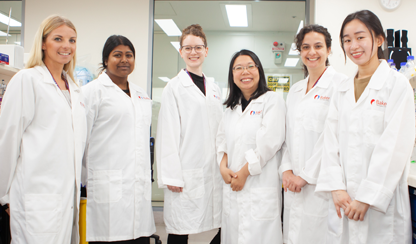
Gender equity is an issue impacting all facets of life and science is one sector that is grappling with this issue.
Workplace diversity has been linked with greater innovation and productivity and in science, it is increasingly linked with better research.
A major issue facing Australian science is the need for more senior female scientists, not least as visible role models. As the saying goes ‘You can’t be what you can’t see’.
The Baker Heart and Diabetes Institute is taking steps to address this and we were excited to recently advertise for a five-year female fellowship for a world-leading female scientist. The Alice Baker and Eleanor Shaw Gender Equity Fellowship is named after two women who helped to establish this Institute in 1926.
In addition, the Institute is looking at other avenues to encourage senior females in science, including reviewing its internal promotions system. This year, we are delighted to announce our latest lab leader, .
Xiaowei is a cardiovascular researcher who is looking at imaging technologies like ultrasound, MRI and CT to shine a light on disease. She is also involved in the development of targeted drug delivery without side effects. She has developed several smart-drugs as a therapy for people after a heart attack to help the heart recover.
She started as a student at the Institute in 2008 and is now setting up her own laboratory and team to continue her pioneering work.
Outside of the lab, Xiaowei has co-founded a not-for-profit community workspace, Maker Community Inc, to encourage creativity, including encouraging more girls to get involved in innovation.
As a member of the Institute’s , Xiaowei is helping to drive a range of initiatives to champion women in science. These include Women in Science Support Grants, more generous primary caregiver leave in the Institute’s EBA, a coaching program for women and resilient parent workshops.
Baker Institute Director, Professor Tom Marwick says organisations such as ours need to take bold steps to champion change, and we are very proud of these initiatives. However, we know there is more work to do.
“This is an issue that is very important to the Institute. As we look to our centenary in 2026, we need to ensure that the organisation has the best teams in place to continue to drive innovative research and that means ensuring our workplace reflects greater diversity.”








